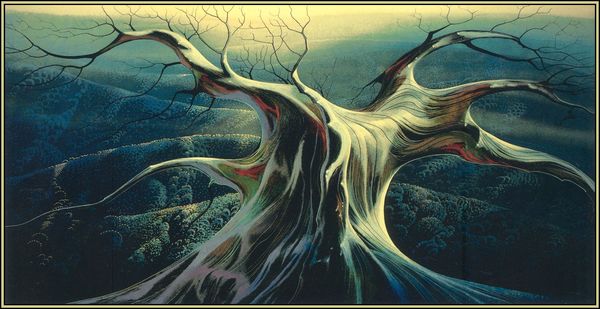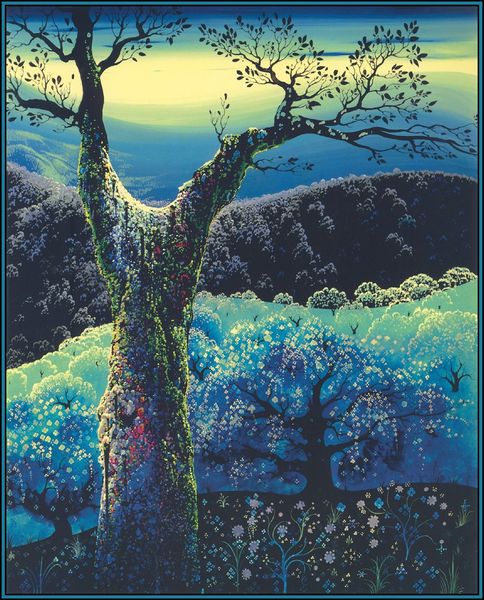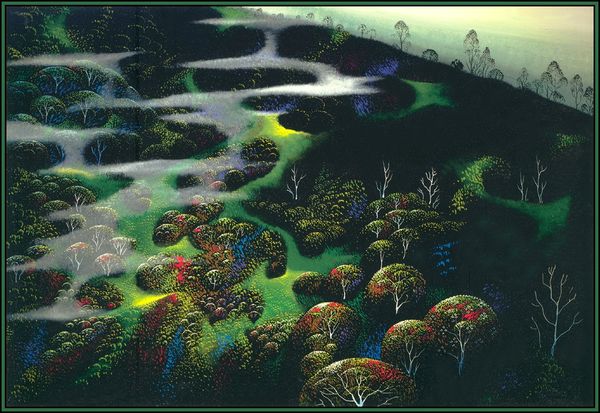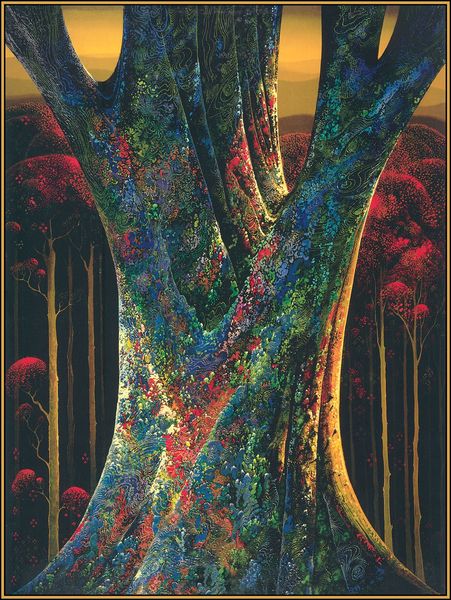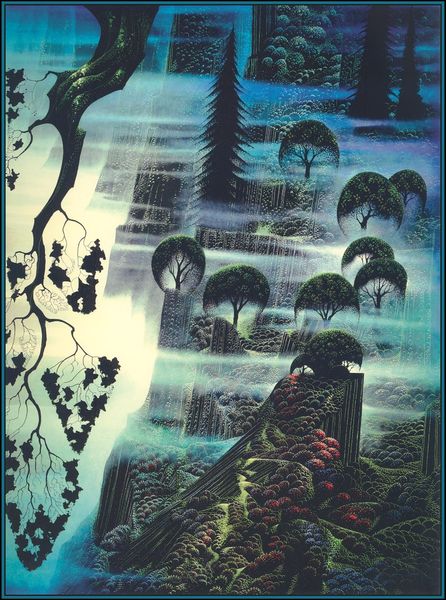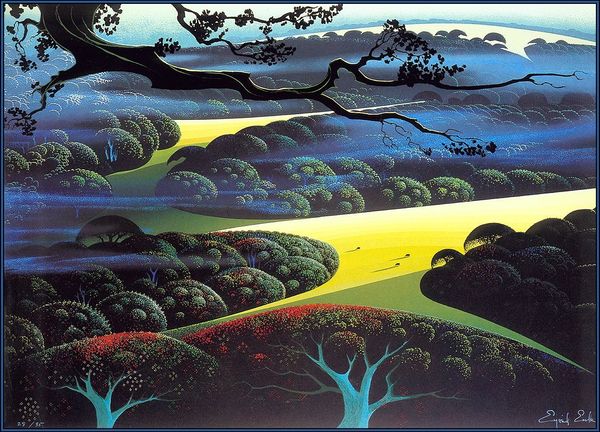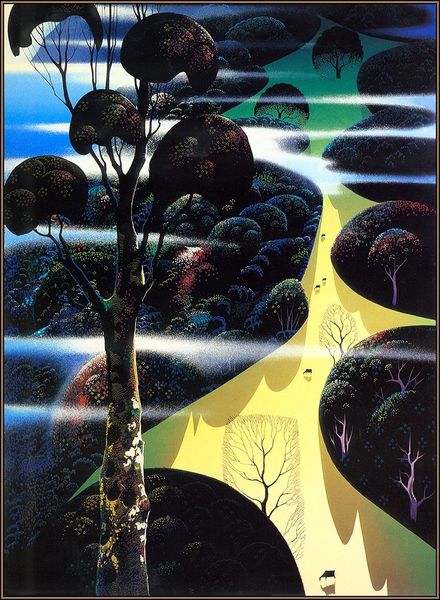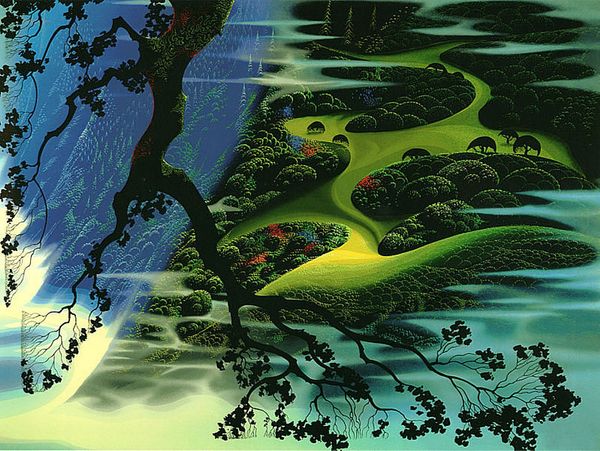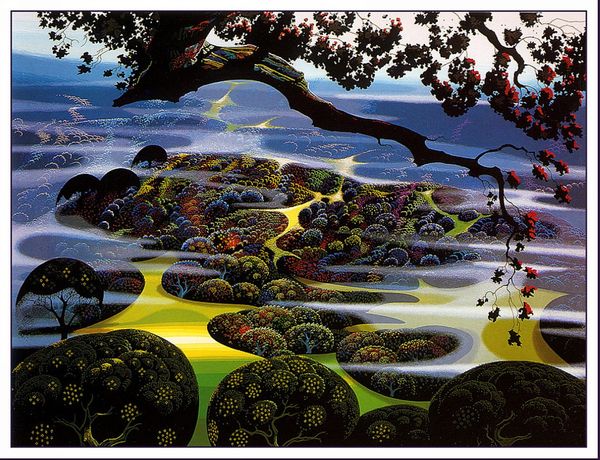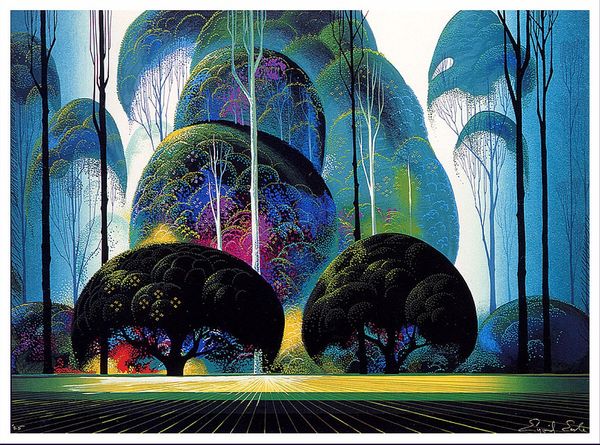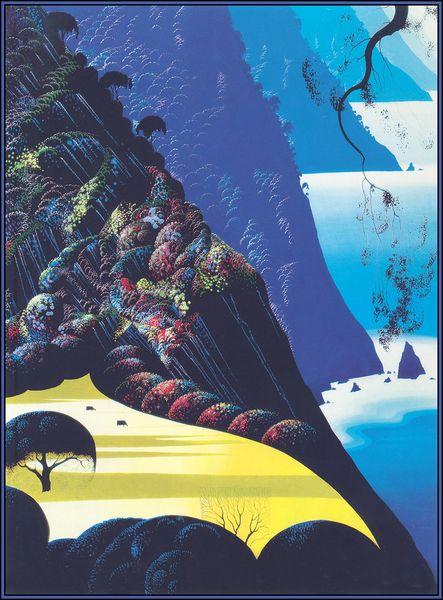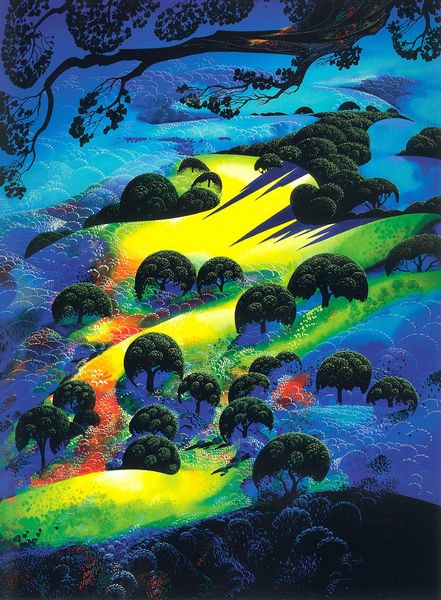
tempera, painting
#
tempera
#
painting
#
landscape
#
geometric
#
modernism
Copyright: Eyvind Earle,Fair Use
Editor: This is "Autumn Shadows," a tempera painting by Eyvind Earle. There isn't a specific date listed for this work. The color palette and composition gives it a slightly unsettling but intriguing mood. What do you see when you look at this painting? Curator: What immediately strikes me is how Earle renders the natural world through a modernist lens, focusing on geometric shapes and repetitive forms. Note how he's used tempera, a fast-drying medium involving pigment mixed with egg yolk, and how this impacts the surface quality, almost removing any visible brushwork. How do you think that materiality changes our perception of "landscape?" Editor: It's interesting you point out the tempera medium because it does feel quite flat. I suppose the process of building up these colors with tempera emphasizes surface and flatness rather than illusionistic depth. So instead of tricking us into believing there is a naturalistic 3D rendering, he is presenting a world that has been crafted in a distinct way. It almost industrializes nature, reducing the landscape to component forms, mass-produced with the same shapes and techniques. Curator: Exactly! It removes nature from romantic notions and perhaps points to humanity’s hand in shaping our surroundings. Consider also that tempera was widely used before the rise of oil painting. Does this reference to pre-industrial techniques further remove this landscape from modern conceptions of art? Or even mass production, itself? Editor: That's a fantastic point. Thinking about pre-industrial techniques in dialogue with modernism gives a completely different meaning to Earle's landscape. It's like he is using his chosen media to investigate the relationship between older means of art creation and new mechanized forms. I’ve certainly learned to appreciate his material-centered landscape painting. Curator: Indeed. Considering the “how” and “why” behind the art’s construction makes you view art, or landscape, through a completely different perspective.
Comments
No comments
Be the first to comment and join the conversation on the ultimate creative platform.
